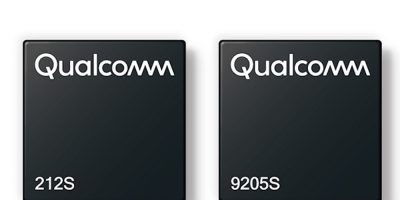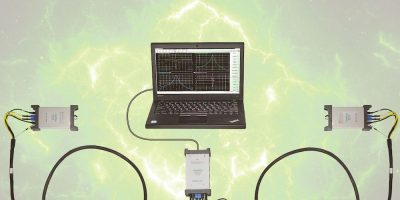Modems developed by Qualcomm in collaboration with non-terrestrial network (NTN) service provider, Skylo to provide uninterrupted remote monitoring and asset tracking. They enable low power connectivity for IoT devices across satellite and cellular networks, said Qualcomm.
The modems follow the 3GPP Release 17 standards for satellite communications on GEO / GSO (geosynchronous equatorial orbit / geostationary orbit) satellites, making connectivity available globally and providing easy device set up and orientation.
Both chipsets support the Qualcomm Aware platform, which provides real time asset tracking and device management in remote areas to support critical decision making.
Qualcomm Technologies has announced the Qualcomm 212S and the Qualcomm 9205S modem chipsets with satellite capability. They power off-grid industrial use cases that require standalone non-terrestrial network (NTN) connectivity or hybrid connectivity alongside terrestrial networks, and allow IoT enterprises, developers, ODMs and OEMs to harness real time information and insights to manage business projects.
The Qualcomm Aware platform allows companies to better monitor and track valuable assets virtually anytime and anywhere around the world. The 212S and 9205S chips advance IoT tracking and monitoring capabilities to provide connectivity and coverage even in the most remote areas, said Qualcomm.
It is designed with ultra-low power consumption for applications in remote, fixed locations, helping promote an extended usable life. Applications include gathering telemetry and data from water and gas tanks, meters, and other infrastructure equipment. It is also suitable for utility grid monitoring, early fire detection reporting, on-shore and off-shore mining installations, and environmental management.
The Qualcomm 212S is Qualcomm Technologies’ first IoT-NTN-only modem that supports the 3GPP Release 17 standards for satellite communications. It is designed for cost efficiency and value, with only the essentials necessary for satellite communications and nothing more, added Qualcomm.
The Qualcomm 212S is also compatible with the recently announced Qualcomm QCM4490 processor to deliver low power satellite connectivity to industrial handheld devices. This important integration powers time-critical, two-way messaging capabilities and one-way payload delivery between devices and customer end points or the Qualcomm Aware cloud, all while helping promote extended usable device time.
The Qualcomm 9205S modem chipset enables IoT devices to easily connect to cellular and satellite networks for virtually gap-free coverage, and integrates GNSS to provide location data.
It is suitable for industrial applications that require always-on, hybrid terrestrial and satellite connectivity for goods and assets on the move. Applications include transoceanic shipping container tracking, agricultural equipment and livestock tracking, global fleet and freight tracking for supply chain management including for logistics partners that perform remote deliveries.
The Qualcomm 9205S uses virtually the same architecture as the Qualcomm 9205 modem, making it easy to upgrade equipment designs to include satellite connectivity and enable hybrid connectivity. The Qualcomm 9205S helps enable hub-type use cases through a highly capable applications processor and peripheral support for a wide variety of IoT applications.
Like the Qualcomm 212S, the Qualcomm 9205S adheres to 3GPP Release 17 standards for satellite communications, making it easy to establish IoT-NTN connectivity using GEO/GSO satellites and eliminates the need for orientation-specific device positioning.
The Qualcomm 212S modem will be available later this year and Qualcomm 9205S modem is available now.







